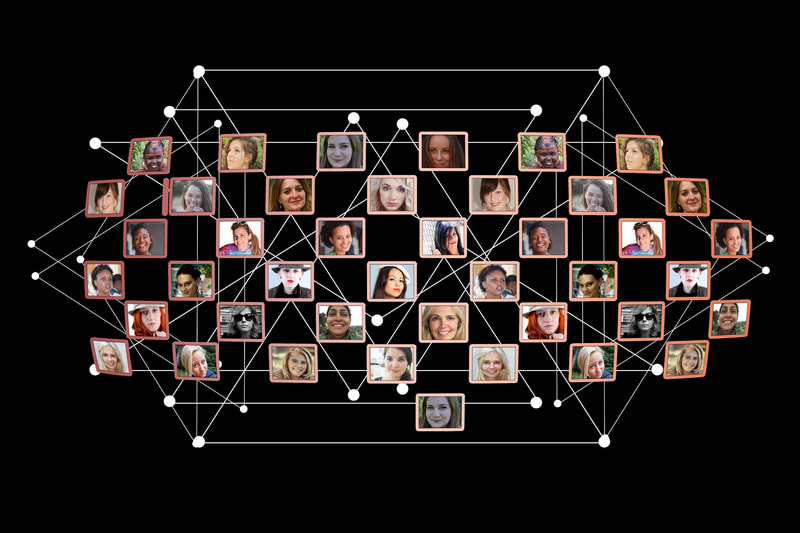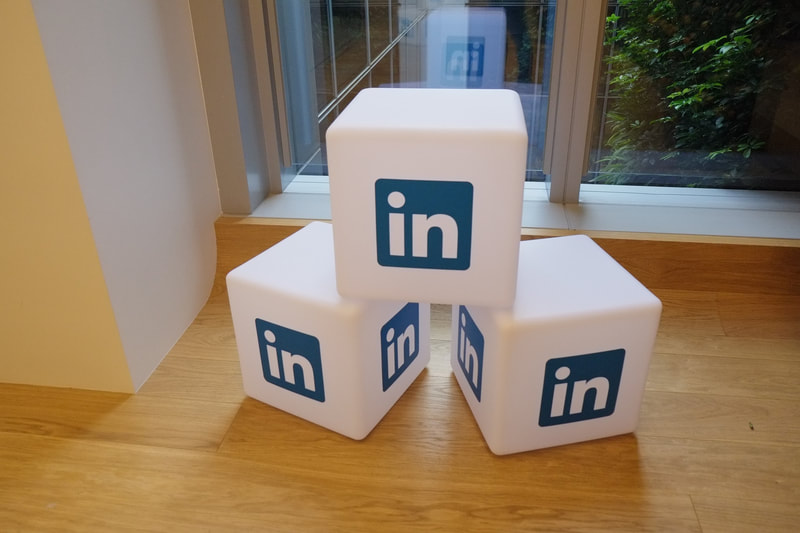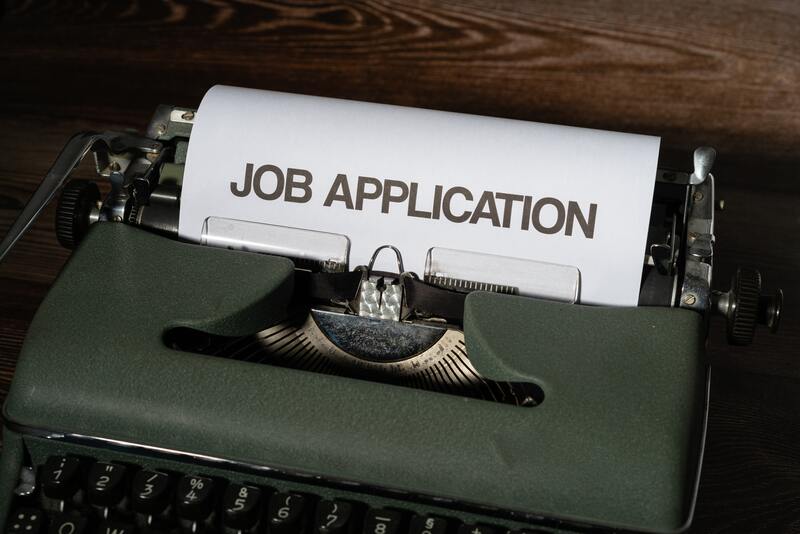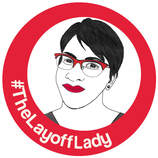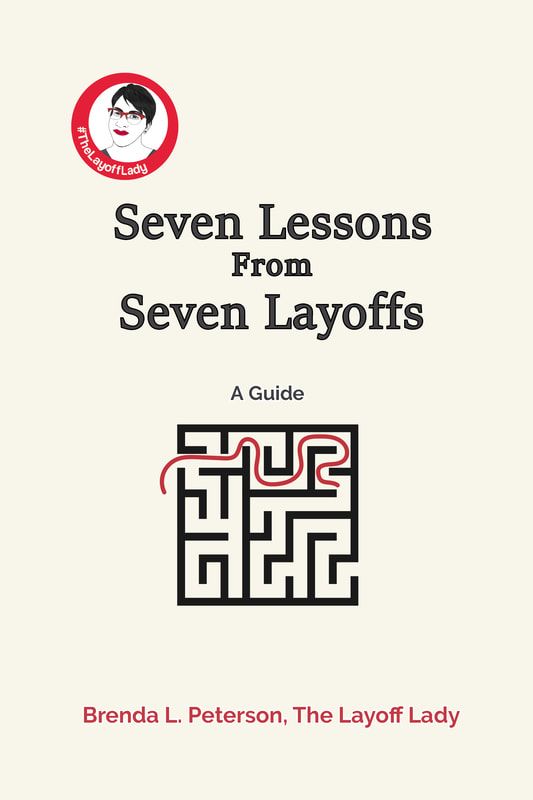|
By Brenda L. Peterson, The Layoff Lady Your Professional NetworkWhen I think about building my professional network, adding new LinkedIn connections is one of my markers of success. I use LinkedIn as a tool to create, build, and maintain my professional relationships. Turning People You've Met Into ConnectionsWhen I first started using LinkedIn, I connected with people I had met in person. At that time, my network mainly included the following people:
Creating New Professional ConnectionsWhen the pandemic hit, I realized I needed to shift my approach, or I would not meet anyone new. I also realized that since more companies were open to hiring remote people, I needed to broaden my network beyond the people I would encounter in person. In addition to the people I used to connect with, I now also started proactively sending connection requests to the following types of people:
Again, the more people I meet, and the more people I connect with who know about my professional value, the better I will be able to find a new role that meets my requirements more quickly. Opportune Times To ConnectI often connect with people when there are specific reasons to connect that are noteworthy, including the following:
Personalizing Connection RequestsIn the vast majority of cases, I personalize a connection request when I send it. When connecting with people I’ve met in person, I always remind them of where we met, include details about our meeting, share helpful information, and invite them to connect. Personalizing the request becomes even more critical if I send a connection request to someone I have not met before. I want to promote the possible value of that relationship. I include the following components when personalizing a connection request:
Here are a few examples of what I might include as a personal note in my personalized connection requests.
Learn More
0 Comments
By Brenda L. Peterson, The Layoff Lady What Do You Want To Be Next?We often ask children, “What do you want to be when you grow up?” As an adult who is in career transition, it’s time to ask yourself, “What do I want to be next?” Remember, you don’t have to do the same thing you were doing before, and now is the perfect time to think about what job is the right next step for you. Shouldn't I Just Take What I Can Get?As a job seeker, I understand the tendency to feel like you are in no position to be picky. However, when I talk with job searchers having difficulty landing a new role, not having a focus for their job search actually slows their progress considerably. Most of the time, employers are less likely to hire someone who wants what I would call “any old job.” Employers would rather find someone who genuinely wants to do a specific type of work, has the necessary skills, and is targeting an identified role. One of the best things you can do for the success of your job search is to figure out what you really want to do, then use your resume and LinkedIn profile to promote yourself as a match for your desired role. Take a BeatWhen your job suddenly ends, I think the natural tendency is to think “I need to be reemployed as quickly as possible” or to skip thinking altogether and seek out exactly the same job you had before. It’s not that you can’t seek out the exactly same type and job title you had before—because you can! Just make sure to reconfirm with yourself that it is the job you want. After my very first layoff, I took a moment for contemplation and thought to myself, “This is my chance to figure out what it is I want to do with my life! I can do anything?” Approximately 5 minutes later, I realized “For me, this is the right area.” Other times, when I fell in that “must get a job right now!” mindset, I just got a job with about the same title as my last job with about the same type of company. Was it a bad decision? Not necessarily. Whether you do the same things as before, or want to shift gears, make sure you’re actively deciding what is next for you. What do you want? Learning About YourselfThe first step of job searching is figuring out what kind of a role you even want. Instead of jumping right into the exact job you did before, it's wise to take a little time for introspection. One good step in this process is finding out more about your strengths. Learning about what you are good at--and how to tell the story of your talents and successes--can help you position yourself well as you apply and interview for a new role. Reflect on Your ValuesA good starting point is thinking about what you truly value in life, and how you express those values. Personally, I also find that it's awfully hard to think of the right words to articulate those high level ideas that matter to you. I discovered the think2perform Online Values Exercise at a previous job when I was designing a retirement planning seminar. Since thinking about your money (or your work for that matter) starts with what you care about on a larger scale, this is a great starting point. Personally, I take this assessment on at least an annual basis because the process helps me revisit my values in general and helps me more thoughtfully talk about what I do and why I do it. The assessment itself includes 51 named value cards and 4 rounds of reviewing the cards. The total time to complete this activity is about 15 minutes, and perhaps more depending on how much contemplation you do during the process. You also have the option to add your own values as needed. In the end, you'll have 5 value cards with descriptions that name and describe key areas that matter to you. After you identify your top 5 values, think about how you live those values in your life, and how you would like to express those values in your work. Use these as your guideposts as you move on to the next steps. Identify Your Work StrengthsThe CliftonStrengths Assessment (previously known as Clifton StrengthsFinder) is a wonderful tool for identifying what you are good at, how that manifests, and how your version of each strength shows up. It not only helps you identify your top strengths, but also gives you language to talk about skills you didn't even realize everyone else didn't have. To access this assessment, you can purchase the StrengthsFinder 2.0 Book (which includes a code for the new CliftonStrengths Online Assessment) or you can directly pay for and access the CliftonStrengths Top 5 Assessment on Gallup.com. Either option should cost around $20 for the basic assessment and results, with the option to purchase additional assessments or training based on your level of interest. The 30-minute online assessment includes 177 questions including paired statements. On a scale you select which of the statements is more like you. From there, you'll receive a report identifying your top five strengths along with a more detailed description of how those strengths are exhibited in how you interact with the world. Reading a report about yourself (one that is freakishly accurate, by the way) is downright life changing. After taking the assessment, you'll be able to see your unique talents, and have language to explain how what you do sets you apart from others. Having a way to put your abilities into words can translate directly into your resume, and how you talk about who you are and what you bring to the table. Reflect on Roles and Identify What You WantThink about your previous jobs and reflect on what you liked and didn't like. As yourself the following questions and write down your answers:
Talk To People In Roles of InterestOne helpful way to find out more about possible career options is to talk to people who are currently in those roles. By reaching out to individuals in your professional network, and asking them to put you in touch with people they know who could help, you can make new connections and find out about specific companies and roles. This will help you start to bridge the distance between your skills, and possible job titles and companies that might be a good fit for you. Learn MoreBy Brenda L. Peterson, The Layoff Lady About Behavioral Interviewing QuestionsDuring the job interview process, hiring managers and recruiters often ask behavioral interview questions. The logic here is that past activity predicts future performance. Instead of asking a theoretical question about how you WOULD do a given then or solve a given problem (which, of course, would be perfectly), the answer here requires a story. These stories usually come from previous work experience and demonstrate how you think, how you solve problems, how you measure success, and what you learned along the way. Behavioral Interview QuestionsBehavioral interview questions often begin with the phrase, "Tell me about a time" and require you to mine your personal experience and answer by telling a story that relates to your responsibilities and accomplishments from you previous jobs. Here are a few examples of old school interview questions (that ask for what you WOULD do) and behavioral interview question alternatives (that ask for what you DID do):
Finding Your StoriesWhen answering these types of questions, you will tell a story. It's valuable to think about your previous work experience and be ready to mine that experience for stories to explain key points to your interviewers. Your goal should be to give a 1-3 minute answer that showcases your skills in ways that addresses the question. The tendency is for people to either not know what to say or to ramble and hope they stumble upon something useful. For the next little part of this article, we'll explore different strategies you could use to answer the following question: Tell me about a time when you had to finish a project with a short turnaround time. Answering With No PlanGosh. I've done a lot of projects where I had to get something done quickly. Those have included software implementations, making a video, and even designing or updating a class with little to no notice. I usually just work really hard and put in extra hours to get something done. So one case I can think of was right when the pandemic started in 2020. I worked for a software company that delivered most of it's training in person at customer sites. Since government guidelines for dealing with COVID were changing daily during the early part of the pandemic, over the course of a week--maybe it was like two--we realized that we would not be able to travel to customer sites to deliver their training like we had always done. We had to figure out how to deliver what was usually four days of in-person training without traveling to a customer site. We really didn't know how we were going to pull that off. We had to figure out how to do that well--and we had to figure it out in a couple of days. I had the trainer cancel their travel plans. Then a few of us--including a salesperson, a trainer, and an instructional designer--sat down and tried to figure out what to do. We didn't want to bore people to death or make it an awful experience. We thought about doing videos, but those take a lot of time to create and produce. We also had to figure out a short term plan for the next week, and figure out a more interim plan after that. It was really hard to figure out. I mean--the whole WORLD had changed! [Note we're still on the stage setting part of this and not even on to the question answer. So. Much. Talking.] PAR: Problem/Project, Action, ResultsPAR is one method you can use to structure your answer. Here are key components and what each letter represents:
A PAR AnswerProject/Problem: In March of 2020, when COVID was declared a pandemic, I worked at XYZ Software Company and my team trained new users right after their software went live for each customer. Because we did new user training in-person at each customer's site, and travel restrictions were going into place, we had to figure out what to do instead--and we only had a few days to figure something out. Action: I talked with my manager about how to deliver this training the following week to ABC Company. We thought through options and decided to use a combination of Zoom meetings and hands-on practice. I repurposed some of our materials to be self-paced activities, and my manager and I talked with the customer about our plans. We agreed to do a 90-minute instructor-led session in the morning, and another one in the afternoon each day that week. Learners would also do self-paced activities, and I would be available to answer questions as needed. Result: This resulted in us delivering the training during the planned week using the time already scheduled, but in a different way. In the end, the customer was happy that we were still on schedule, and end users appreciated the combination of instructor-led training and self-directed time. CARL: Context, Action, Results, LearningCARL is another method you can use to structure your answers. Here are key components and what each letter represents:
A CARL AnswerContext: In March of 2020, when COVID was declared a pandemic, I worked at XYZ Software Company and my team trained new users right after their software went live for each customer. Because we did new user training in-person at each customer's site, and travel restrictions were going into place, we had to figure out what to do instead--and we only had a few days to figure something out. Action: I talked with my manager about how to deliver this training the following week to ABC Company. We thought through options and decided to use a combination of Zoom meetings and hands-on practice. I repurposed some of our materials to be self-paced activities, and my manager and I talked with the customer about our plans. We agreed to do a 90-minute instructor-led session in the morning, and another one in the afternoon each day that week. Learners would also do self-paced activities, and I would be available to answer questions as needed. Result: This resulted in us delivering the training during the planned week using the time already scheduled, but in a different way. In the end, the customer was happy that we were still on schedule, and end users appreciated the combination of instructor-led training and self-directed time. Learning: Through this process we learned more about how we could deliver effective learning at a distance. We also found that encouraging learners to turn their cameras on during training helped build a sense of community among class members. We built upon our lessons learned to improve our training with each customer. Additional Question Answering ModelsIn addition to PAR and CARL, here are two more models that have similar components. It doesn't matter as much which one you choose, just that you use one of these models to structure your answer and minimize endless rambling:
Learn More
By Brenda L. Peterson, The Layoff Lady Eye on the Prize: Getting the InterviewThere are a lot of opinions on how to interact with employers early in the hiring process. They include everything from sending a basic “I applied” email to off-the-wall rom-com level gesture like sending the hiring manager a cake with your resume attached to the inside of the box. In this article, we’ll focus on using email to follow up after you have formally applied for the job. Regardless of your approach (and my overall follow-up recommendations are closer to the email than the cake end of the spectrum), stay focused on what you’re trying to accomplish. Remember, your goal at this point in the process is to get your application into the “must interview” pile. What Follow-Up Email Messages Will and Won't DoLet’s first set a few expectations on the impact sending a follow-up email message will have:
Like with most of the hiring process, there is no guarantee that you will get an interview for any given role. However, doing the right things consistently gives you a better chance of having a positive outcome. My Horror Story: Follow-Up Gone AwryOnce upon a time, I was the hiring manager for an instructional designer position. A person who I had never met, but who knew a colleague of mine, had a background in instructional design and was interested in the job. Through our shared colleague, that person (who I will now refer to as “the candidate”) ended up with my name and work contact information. What followed was an example of the worst-case scenario of a how a candidate reaching out to a hiring manager can actually be detrimental. From mid-December through the end of the calendar year, over the course of 10 business days, the candidate (who—reminder—I had never before interacted with in any way) contacted me 16 times via phone and email about the open position. I do not remember what all the candidate asked during each request (because blocking out awful memories is a real thing). I do remember one early request was asking how to apply for the job. Given that this role was with a technology company, and I needed someone who could work independently and solve problems, a candidate who wasn’t sure how to apply for the job through a pretty typical Careers webpage was not going to be a top candidate. In addition, after they managed to apply, they then called and also emailed the recruiter multiple times, again in the spirit of follow-up. The good news—we definitely knew the candidate’s name. The bad news (for them)—we knew for sure we were NOT going to interview them. Worst Practices: Job Application Follow-UpAs a hiring manager, here are the issues I’ve seen when people follow up on job applications:
Finding the Right People and Contact InformationRemember, typically the two people to follow up with regarding your job application are the recruiter and the hiring manager. The first challenge is figuring out who these people are, then getting their email addresses. In some cases, the name of the recruiter may be included on the job posting. Through using LinkedIn or the company website, you may be able to find a professional email address to use for them. You can also potentially do some digging through LinkedIn and find out the name of the recruiter through their LinkedIn posts. It could be little to no effort to find their email address, or a genuine project, to find out that detail about the recruiter. For hiring managers, some job listings will include the title of the hiring manager (who the position reports to), or even sometimes their name. Again, you may be able to use LinkedIn to find their contact information, or you may find the naming scheme a company uses (like [email protected]) to figure out their email address. You may also need to contact HR or a current employee to find out more, or there might be fee-based services you can use. When it comes right down to it, it is important for you to determine how much time and money you want to dedicate to finding this information. You also need to decide if the time you spend on this quest is worth the value you will gain from sending a follow-up message. It's your call. What To Include In Your Follow-Up EmailOnce you’ve identified the person to contact, and have their email address, think about what you’ll say in your message. Here are my recommendations on details to include:
How a Follow-Up Message Might LookSubject Line: Following Up on my Support Manager Application Body of the Message: Hi, Annette. I’m Esme Whitlock, and I'm sending you a quick message to introduce myself, and let you know I just applied for the Support Manager role with Super Cool Company. Because I have a background working in tech support specialist and help desk supervisor jobs in manufacturing companies, I think I am a great match for this position. As indicated in the job description, I have experience setting up a knowledge base using Super Cool Software and training new staff on using internal resources. I also enjoy hiring and training new associates and helping them grow their skillsets to meet performance goals. These skills, and my desire to grow in my career, drive my excitement for this role with Super Cool Company. If you’re interested in talking to me directly about the Support Manager role and my qualifications, please contact me via text/phone at 555-555-5555 or via email at [email protected]. Thank you! Esme Whitlock 555-555-5555 [email protected] https://www.linkedin.com/in/mylinkedin/ewhitlock Follow-up Email Timing and FrequencyThere are also various opinions on when to contact a potential employer and how many contacts to make. I suggest emailing once sometime between the day you apply and a week after you apply to briefly introduce yourself and get your name in front of the hiring manager and/or recruiter. If you decide you want to do a second message, I suggest waiting until a week or two after the first message and modifying the message so it is not just a repeat of the first message you send. Remember, you get to do whatever you want to do. Some hiring managers and recruiters may be very open to messages, and others might prefer to avoid being contacted. I believe reaching out one to two times with a few days in between contacts should show your interest without venturing into being way too much. Learn More |
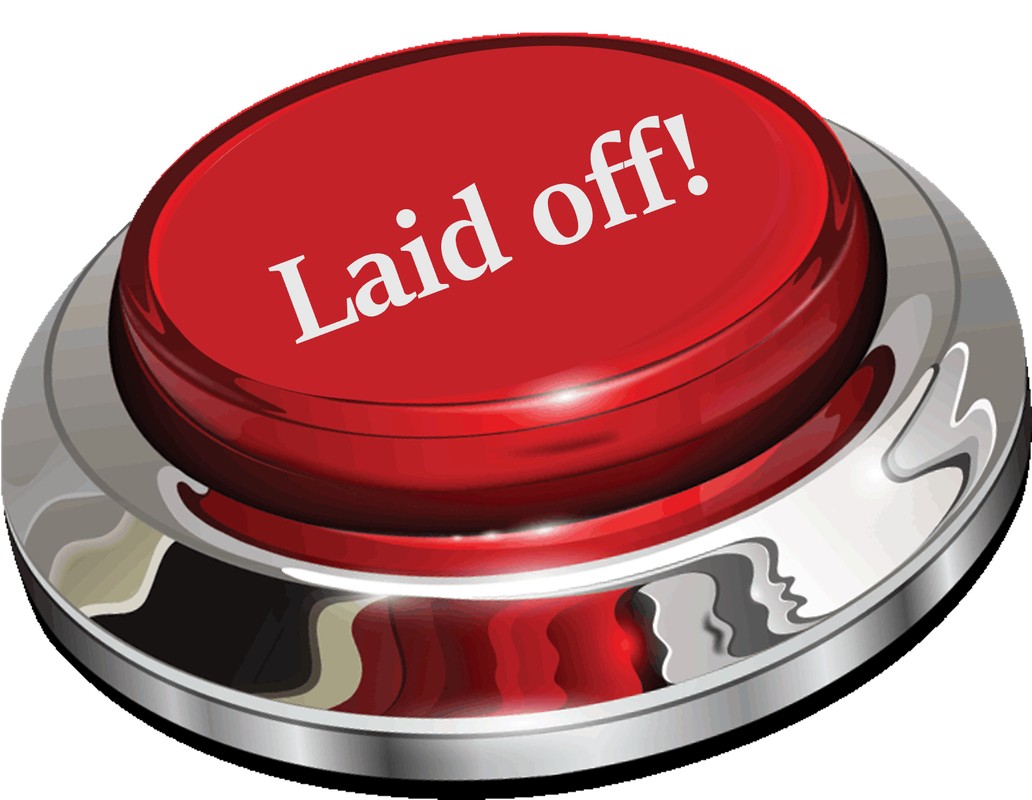
Just get laid off?
Click here for info on what to do first. Author7-time layoff survivor Brenda L. Peterson, The Layoff Lady, waxes poetic on layoffs, job transitions, & career resilience. Buy The Book!Were you recently laid off from your job and need a roadmap for what's next? Pick up a copy of my book, Seven Lessons From Seven Layoffs: A Guide!
Categories
All
Archives
July 2024
|

